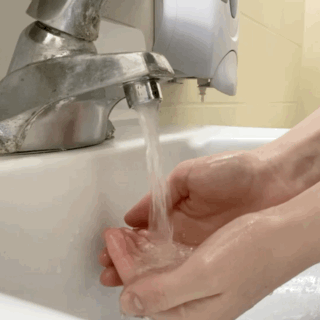Steve Wilder has no idea what “normal” looks like in Sycamore. He started as superintendent for Sycamore schools in July 2020. He spent his spring frantically guiding his outgoing district through the first wave of the crisis while also trying to transition to his new position.
“There were times that I felt really helpless,” said Wilder. “Because those questions were coming and I didn't have the answers that people wanted that I wanted to be able to share with them.”
He’s not alone. For everyone, students and administrators alike, every day early in the pandemic was met with new state guidance and a new series of crystal ball-type questions where nobody knew the answers. Even now, a year into COVID, it can be challenging to find the time to reflect on the past year.
Amboy Superintendent Joshua Nichols said education leaders got a courtesy call from Illinois Governor J.B. Pritzker the first time schools had to shut down. But, most of the time, he had no idea guidance was changing until everyone else did.
“I would sometimes find out about things," he said, "if I was busy in the afternoon, from parents and other employees.”
Education was reinvented on the fly, in real-time, while districts scrambled to secure supplies to keep their kids safe and tech so they could learn at home. Some schools bought tons of plastic face shields thinking they’d be essential, only to find out a week later they wouldn’t work.
Out in rural Amboy, Nichols spent federal emergency funds on improving their Wi-Fi, but download speeds still weren’t adequate for e-learning.
“It’s just not good service. Wi-Fi is terrible and that's where it is," he said. "We did put some Wi-Fi access points -- we use CARES dollars for that -- outside of the building, so if people needed to they could pull up and get it.”
Without reliable internet, they focused on coming back to in-person learning in the fall. They have been doing that ever since. Nichols said it was more feasible for them as a smaller district, although they have had adaptive pauses and a few COVID cases in their middle school recently.
Sycamore swung from hybrid in-person to remote learning through the year as case counts fluctuated. At one point, over 300 students were quarantined.
Now, students can learn in-person up to four days a week. Wilder said they’re still wondering what exactly next year will look like.
“I still think there's going to be a need for some sort of remote option,” he said. “The question is, how many students are going to need to take advantage of that?”
Nichols is asking himself the same questions about this generation-defining moment. How has COVID fundamentally changed education?
“When you start thinking about, like, high school kids," said the Amboy superintendent, "do we need them every single day in the building?”
He’s also been searching for silver linings from what has been a year of trauma for his students. What were their blind spots that the pandemic shined a light on?
“We're talking about feeding kids through summer, but this is the first time we've ever had this conversation," he said. "There are very few districts that did that. And so it's like, 'is that okay that we've never done that?' That kind of bothers me a little bit, I mean, because we have the means to do it and we haven't done it.”
The pandemic has also pushed schools, like Sycamore, to invest in social-emotional resources. Social workers have pushed mindfulness techniques and self-care strategies to students, even if it can be hard to not make it feel forced or awkward.
“They were kind of left to learn independently and they dealt with things in their own personal life," said Wilder. "They lost family members, they lost friends. We focus so much on the other stuff that sometimes it's easy to lose sight of how difficult things have been for each of us over the last year.”
And for all the talk of learning loss? Some students did struggle with remote learning, but they agreed it’s not as dire as some predicted. Even last spring when they were – as one educator described it -- putting the plane together while it was in the air, “education did not stop," Nichols said. "It kept going the entire time.”
Some familiar activities are beginning to return. Graduation ceremonies will go on and even some pandemic-altered proms may take place. They’re going to have to keep looking back at how the pandemic impacted – and still impacts -- their students. But, now at least, education leaders might have some answers when the next set of questions come in.


